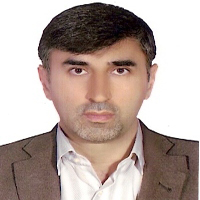Analyzing trend and factors affecting air quality in urban areas: a case study in the megacity of Isfahan-Iran
Rapid and uncontrolled expansion of cities, increased traffic, industrial enterprises and low-quality fuels, as well as urban morphology parameters and climatic conditions are among the factors affecting air pollution in urban areas. In Iran, the metropolis of Isfahan, which is the third largest urban area in the country, has increased air pollution with the extensive development of industrial enterprises, population growth and urban growth. Therefore, in order to find the factors affecting the trend of air quality changes, trend analysis and evaluation of the relationship between land use parameters, industrial development and traffic situation with air pollution indicators were studied.
In order to evaluate the trend using measured periodic data and simple correlation and regression methods of seven air pollutants including PM2.5, PM10, CO, SO2, NO, NO2 and NOX as dependent variables and meteorological parameters, type of land use, industry development and vehicles were analyzed as independent variables. Also in the computational method, SPSS software was used to test the normal distribution of data sets including the concentration of air pollutants and meteorology from 1387 to 1394, in 10 air pollution measuring stations and 3 meteorological stations in Isfahan metropolis.
The results of the study show that the average annual concentration of PM (PM10 / PM2.5), NO and CO decreases and the average annual concentration of SO2, NO2 and NOX increases. In addition, the average annual rainfall, temperature and wind speed increased while the trend of relative humidity in the study area did not change significantly. It was also found that the trend of residential, educational, commercial, public services, transportation and the number of industrial units and vehicles has increased significantly. However, the amount of agricultural land, green space and industrial areas has significantly decreased in the study area. The results of stepwise regression analysis show that changing the use of agricultural land to residential areas and increasing wind speed can be the reasons for the decreasing trend of NO, CO. And suspended particles in the study area. In addition, the increasing trend of transportation can be the most important reason for the increase in NO2 concentration. On the other hand, due to the increasing trend of NOX emissions and significant negative correlation with green space and positive correlation with transportation and industrial areas and the result of stepwise regression model, it can be concluded that reducing green space and an increase of 99.5% in the area of transportation use increases the NOX concentration in the study area. In addition, the size of utility centers increases the concentration of SO2 and there is a negative relationship between the concentration of PM2.5 and SO2 (as the concentration of SO2 increases, the concentration of PM2.5 increases).
It is noteworthy that the relationship between air quality indicators as dependent variables with independent variables in urban areas is complex and it is not clear which specific factor or parameter is the most important scenario of air pollution in an urban context. Therefore, more detailed research is needed.
-
Comparative Study of Biotreated Leachate Before and After Using AOPs Treatment for Removing COD, BOD, and Color
Sadegh Motaghed, Amir Hessam Hassani *, Seyed Alireza Hajiseyed Mirzahosseini, Seyed Masoud Monavari, Nabiollah Mansouri
Journal of Gas Technology, Summer 2024 -
Development of an Ensemble Learning Approach for Soybean Yield Prediction using Satellite and Meteorological Data
Ali Sabzali Yameqani*, Aliasghar Alesheikh, Mostafa Majidi
Journal of Geomatics Science and Technology, -
Presenting an environmental assessment model of risks caused by electronic waste (Case study of Tehran Municipality, Region 6)
Zahra Rafighi, Zahra Abedi*, Hanieh Nikoomaram, Seyed Alireza Haj Mirza Hosseini
Iran Occupational Health, -
Investigation of Spatio-Temporal Patterns of Suburban Traffic Accidents in Isfahan Province in GIS Environment
M. Rahmati, H. Aghamohammadi *, S. Behzadi, A.A. Alesheikh
Journal of Remote Sensing and Geoinformation Research,



